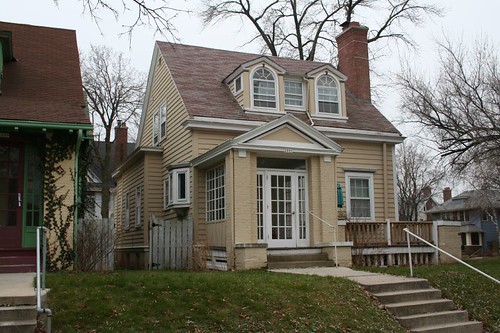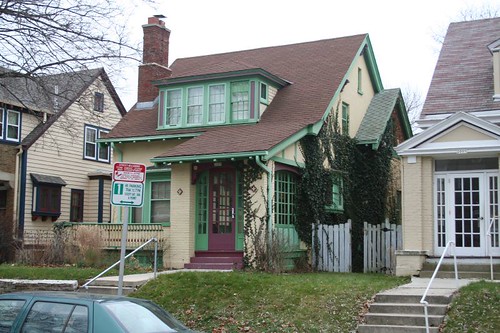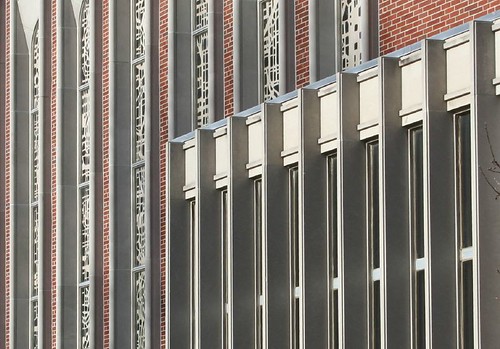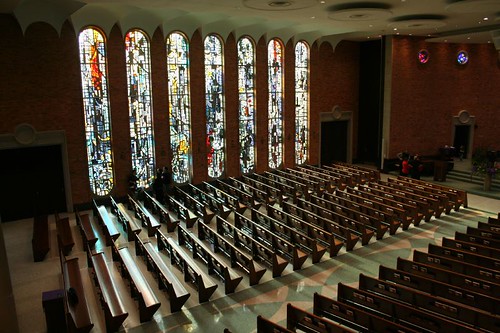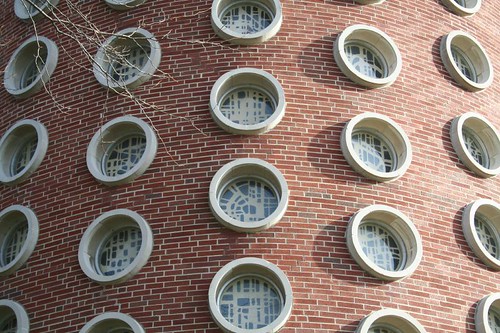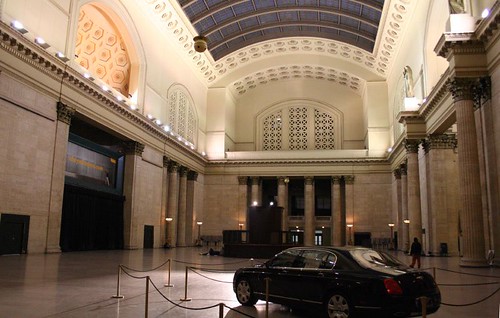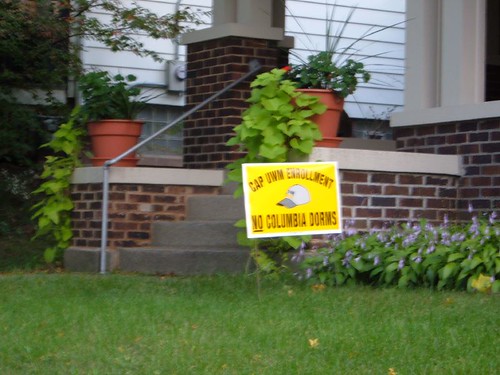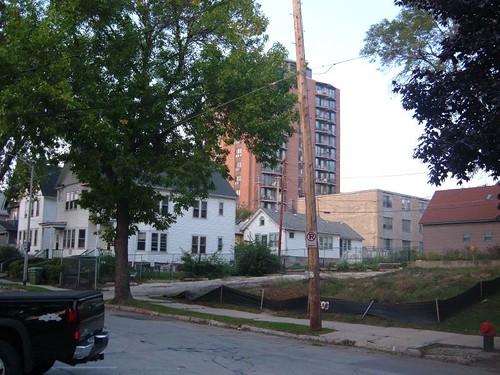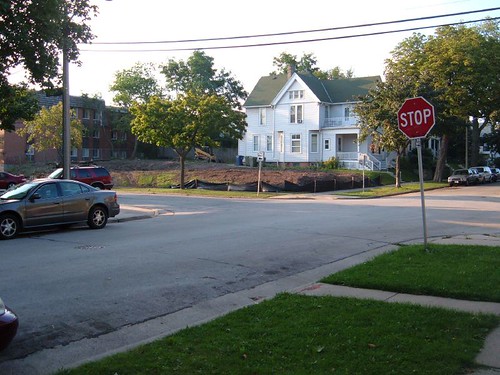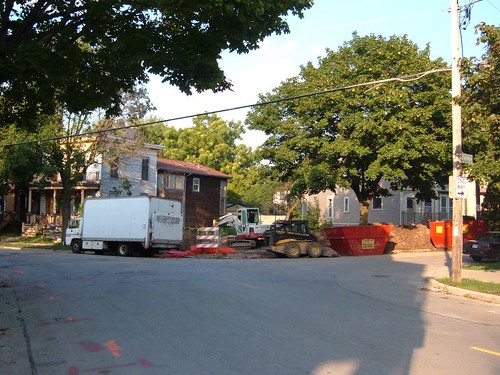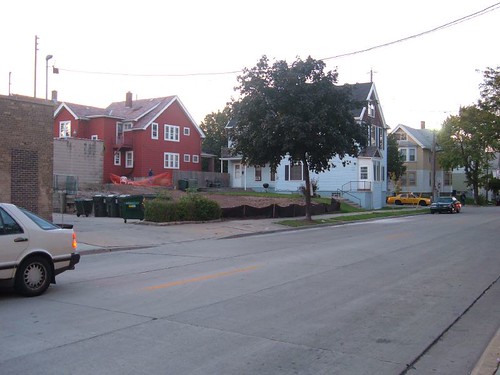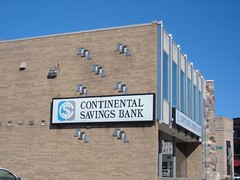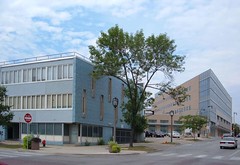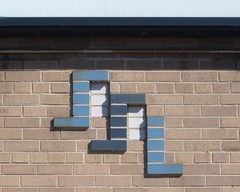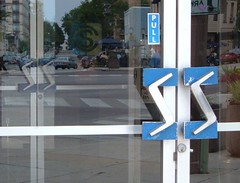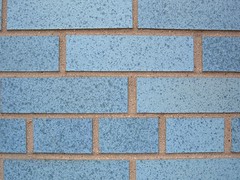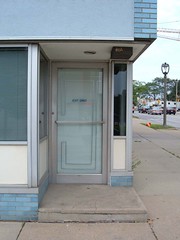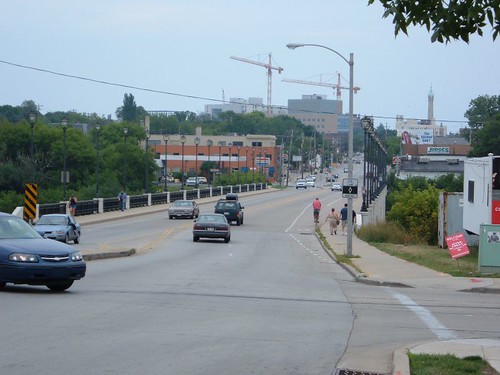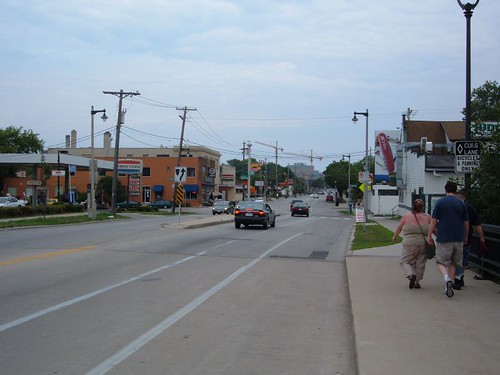Much has been written about the project, online and elsewhere; yard signs have sprouted around the East Side both for and against ("No 11 story condo" and something along the lines of "YES to developing Downer Avenue").
Three renderings of the project can be found at OnMilwaukee.com. It looks like a good building, a cut above the norm for a condo tower. Still, at that scale, I worry it will overpower the neighborhood. The area hardly has any claim to historic congruity; gabled duplexes are dotted among apartment buildings from the 1920s and 1960s in a variety of scales. But almost all of the apartment blocks are four stories or fewer. The only towers in the area are a single apartment building at the southern edge of the neighborhood, and the distant buildings of Columbia-St. Mary Hospital. Inserting a high rise into the middle of the area will definately alter its flavor.
It's easy to get alarmed about change of that nature; I could see it as analogous to a Georgetown in Washington DC, or one of Chicago's many vital neighborhoods, where historic survivors stand shoulder-to-shoulder with numerous newer buildings. Such neighborhoods can be vital, exciting places to work and live... but they can also conflict with the sleepy, pleasant aura that much of East Side exudes in its present condition.
I was a little shocked by this quote, from the UWM Post blog:
[New Land Enterprise's Tim] Gokhman sees as vital to development on the East Side. He also believes that this project could revitalize an important segment of the neighborhood.“It’s important to infuse life back into the Downer Avenue district.”
Infuse life into one of the most successful, vital, and active commercial strips in the city? The center of a busy, healthy, well-to-do neighborhood? I've always been under the impression that many of the strip's problems come from the whimsical demands of certain landlords, rather than a lack of willing tenants.
Anyway.
New Land Enterprises has, according to their web site, been responsible for some of the best condo developments on the East Side and downtown in recent years. It's a shame we can't hook them up with the former Sentry site on Oakland Avenue!
Edit, 2/05/07: The houses may be seen in this post. It's a moot point, however, because they were all demolished in the first weeks of January. The site is now empty. No salvage appears to have occurred, an incredible waste considering the materials this sort of building is typically made of.
